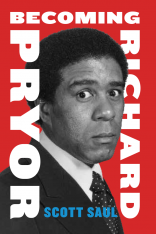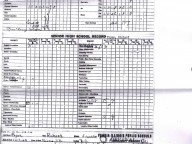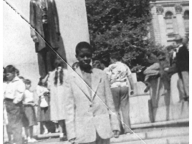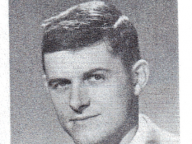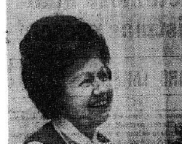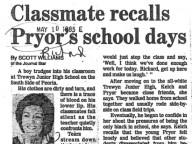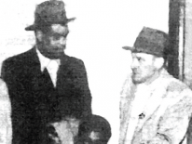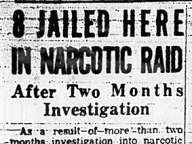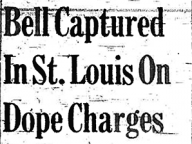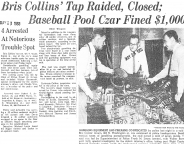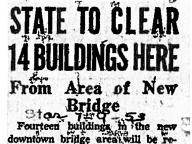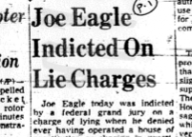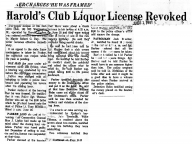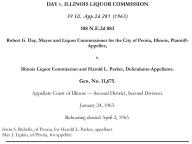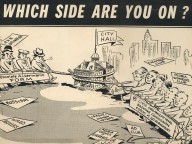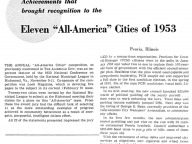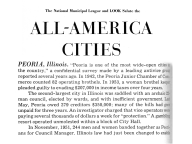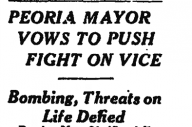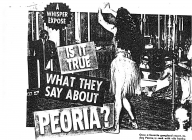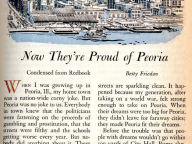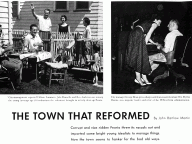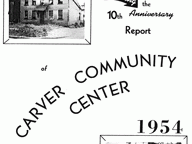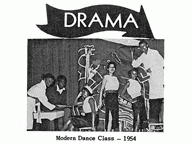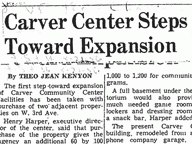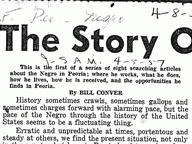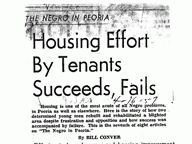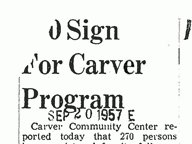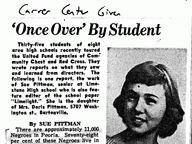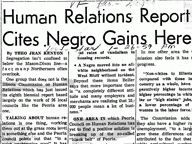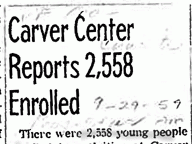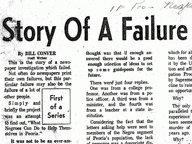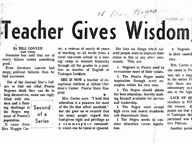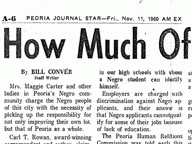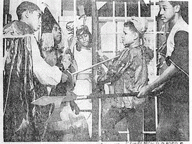1953–1962: All-American City
In the 1950s Peoria finally succeeded in altering its self-image. It had begun the 1940s known as a gangster’s playland; it ended the 1950s known as a well-scrubbed, All-American City, and did so by coming down hard on those who represented its less salubrious past. In 1953, the group “Peorians for Council-Manager” (PCM) mobilized to put an end to a 107-year-long streak of aldermanic government, transforming the calculus of municipal politics in far-reaching ways. Police raids on brothels became common practice; the city’s underworld remnant was on the defensive. Tellingly, the North Washington red-light district — the neighborhood that Richard called home — was demolished in this period as part of the construction of a new bridge.
The Crewcuts Take Charge
A new generation of city officials — young, clean-cut and committed to cleaning up Peoria — came into office with the PCM’s rise. Often veterans of World War II or the Korean War, the “crewcuts” were instrumental in modernizing the city and making its operations above board. A professional city manager was brought in to supervise the ambitious job, and the tobacco juice was, symbolically, scoured off the marble walls of City Hall. The changes permeated city life in ways large and small. Parking tickets were no longer fixed through behind-the-scenes arrangements; new stop signs, traffic signals and reconfigured intersections made Peoria’s streets seem efficient and modern. Meanwhile Peoria’s mayor and police chief no longer countenanced open gambling or prostitution in their city limits. With its gleaming All-American image, Peoria was chosen as one of eleven “All-America Cities” featured in Look magazine.
The Limits of Reform
The reform movement may have triumphed in the 1953 election, but the PCM’s victory was by no means total. Critics argued that the PCM was a “closed corporation” that served the narrow interests of “the bluff” exclusively, and that it was anti-labor since it terminated longstanding municipal agreements with trade unions. The arguments were persuasive t0 many. In the councilmanic election of 1955, none of three PCM-endorsed officials were re-elected.
Within just two years of Peoria’s change, a Saturday Evening Post reporter found widespread nostalgia among some Peorians for the bad old days of corruption. “This used to be the best town in the country,” said one bartender. “Then we got a reform administration. Now it ain’t worth a damn.”
A reporter from Whisper, a scandal-oriented magazine, came to another conclusion: Peoria had changed only in image, not in substance. Dig beneath the surface a bit, and one would find the hustlers, prostitutes, and gamblers of old.
Black Peoria in the Era of Reform
While the new generation of eager reformers proudly proclaimed Peoria “a town you could grow up in,” the story was a little different for someone like Richard Pryor, who had been pushed out of the interracial North Washington neighborhood by its demolition and now attended whiter schools like Trewyn Junior High, where he was the only black student in his class. Was there a place for black Peorians among the white crewcuts?
Sensing a sharp racial divide, the Peoria Journal Star published a series of articles taking the pulse of Black Peoria. The series, written by a black journalist, detailed the achievements of black Peorians and also the structural barriers they faced.
Meanwhile, like many young black Peorians, Richard sought refuge and cultivated his talents at the Carver Center, a community hub that boomed in this era of reform. Much later, he quipped onstage, about this moment in Peoria’s history: “They called Peoria the model city. That meant they had the niggers under control.”
Tweet“They called Peoria the model city. That meant they had the niggers under control.”
— Richard Pryor
